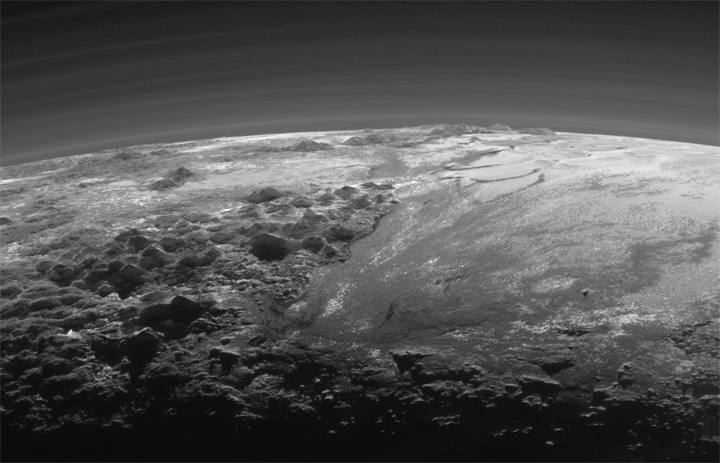New data collected from NASA’s New Horizons spacecraft is surprising scientists.

READ MORE: Blue skies, water ice found on Pluto
One of the coolest findings — probably quite literally — is the belief that a 3-D map of the small world indicates that there are cryovolcanoes, otherwise volcanoes of ice. And data suggests that they may have been active in the recent geological past.
Instead of ice, the volcanoes spew out a melted mix of water ice, nitrogen, ammonia or methane.
The findings also suggest that the surface of Pluto varies in age, “from ancient to intermediate to relatively young.” And that “relatively young” means within the last 10 million years or so. The solar system is believed to be 4.6 billion years old.
More findings include the unusual motions of the smaller moons of Pluto, mostly concerning how fast they spin and their intense wobble.
“The New Horizons mission has taken what we thought we knew about Pluto and turned it upside down,” said Jim Green, director of planetary science at NASA Headquarters in Washington. “It’s why we explore — to satisfy our innate curiosity and answer deeper questions about how we got here and what lies beyond the next horizon.”
The findings are being shared at the 47th Annual Meeting of the American Astronomical Society’s Division for Planetary Sciences, being held in Maryland this week.





Comments